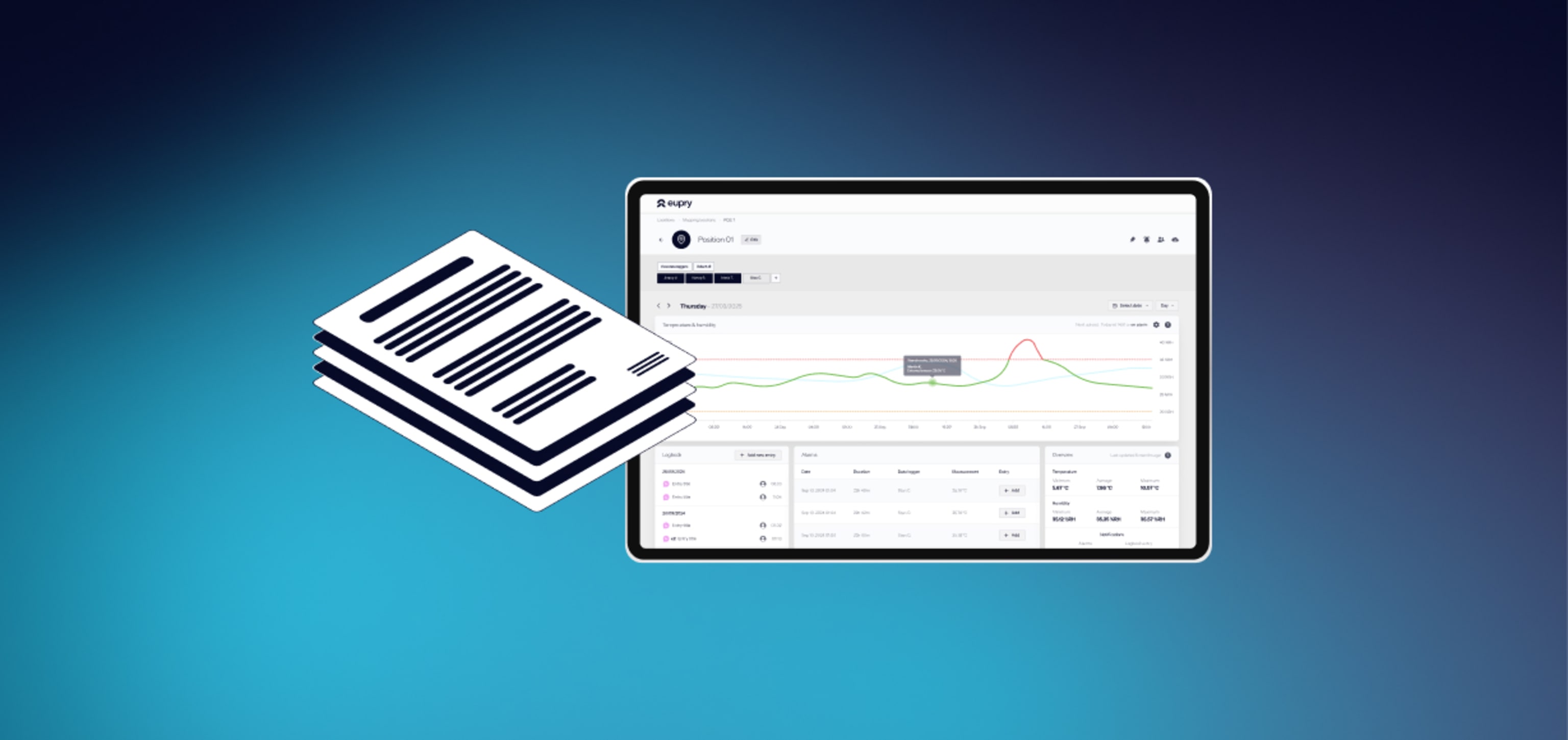
Key guidelines for temperature qualification
Jakob Konradsen

Estimated reading time: 4 minutes
What you need to know about the concept of temperature qualification for equipment used to store pharmaceuticals and other temperature-sensitive assets.
The article goes through:
Why is it important to carry out a temperature qualification study?
A temperature qualification study is performed on equipment used for temperature-critical applications, such as fridges, freezers, incubators, and cold rooms.
A qualification study is a key process before goods can be stored. By qualifying and certifying your equipment you ensure that during normal operating conditions, it is always capable of maintaining the specified critical values throughout the entire temperature interval.
Additionally, the test and certification allow for a better understanding of the performance of both the equipment and the enclosed area. Depending on the type and use case of the equipment, there can also be a need for testing other environmental parameters, but as temperature is the most prevalent one, this is what the article will focus on.
How is a mapping study different from a qualification study?
Mapping and qualification are not the same thing, but a mapping study is often a part of a qualification. Both are processes that need to take place typically before goods can be stored. However, whereas mapping solely focuses on analysing the uniformity of the distribution of temperature, a qualification procedure extends beyond this. Within a qualification procedure all relevant equipment is verified and tested so that it can be ensured that everything is installed and operated correctly.
The procedure also tests the equipment’s capability of achieving the desired temperature. This means that if a storage room is qualified for 0-5 degrees Celsius, both the room and the associated equipment are capable of maintaining the temperature within that exact interval.

Which units require temperature qualification?
The following are examples of equipment that traditionally requires temperature qualification along with common use-cases for each.
- Refrigerators used for storing medicines or vaccines.
- Freezers -18° C (0° F) for keeping frozen food, vaccines, certain medicine etc.
- Ultra Low Temperature (ULT) freezer −40 to −86 °C (−40 to −123 °F) used for biological and biotech storage.
- Cold rooms for storing consumer goods and foods etc.
- Vans and trucks used for local distribution of medicine.
- Incubators for growing bacteria cultures.
- Insulated boxes used for storing medicine for short durations under controlled temperatures.
- Cryo freezers for long-term storage.
- Refrigerated containers (reefers) for long distance transport of medicine.
- Thermal insulated containers with or without auxiliary power for storing medicine.
- Stability and humidity chambers.
- Cleanrooms used for manufacturing electronics, pharmaceutical products, and medical equipment etc.# What equipment and assets require temperature qualification?
What are the steps in a temperature qualification study?
The process of qualifying a piece of equipment follows the V-model, and consists of different types of tests that verifies and documents the design specifications for each. The tests have to be carried out in accordance with protocol and for each type of equipment separately.
Explanation of the entire process can be seen below.
- User Requirement Specification (URS): URS is the first document required. Here the users’ requirements for the equipment are documented. This could be a specific temperature interval for a fridge.
- Risk analysis: To mitigate risks, a thorough assessment of what can go wrong is made. Risks are evaluated and ordered in respect to probability, severity and detectability.
- Design Specification/Qualification: Specification of the equipment that needs to be acquired. What model, type, size, manufacturer etc.
- Installation Qualification: Here it is checked whether the right equipment has been purchased, that all components are calibrated periodically, installed according to the specifications, and maintained and operated in accordance to the guidelines of the manufacturer.
- Operational Qualification – mapping: Operational Qualification is the first part of the temperature mapping process, and here the equipment’s ability to function and correctly maintain a specific temperature is tested. The first test is a “dry run” before the equipment is put into service.
- Performance Qualification – mapping: Lastly, the Performance Qualification Mapping is made to test whether the regulations work when operating with full capacity, and under all types of conditions. This allows for full reliability and ensures correct performance no matter the distribution or material of the equipment.
Having gone through all the steps in the V-model, and successfully completed and verified all tests, the asset/equipment is deemed certified in all respects.
Only if any deviations arise during some of the processes, must they be rectified and retested before the process of qualifying the equipment is completed. However, the scope of the retesting depends on the severity of the deviations observed.
Can temperature qualification be done in real-time?
When getting an Eupry temperature calibration the entire procedure is done using our Wi-Fi data loggers.
With these, the data are transmitted in real-time to our website, from where you can track every procedure and test conducted in each step of the qualification. Thereby, you are given full transparency of the process and provided the ability to mitigate the risk of time loss, as deviations can be handled immediately, thus avoiding having to retest.

Gain full confidence in your temperature compliance
Automate and connect monitoring, mapping, and calibration in one digital solution. No gaps, no mess. Download a free catalog and see how it works.

